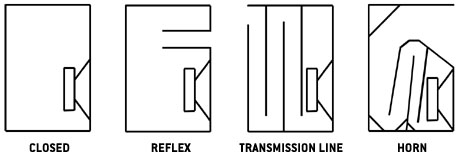| Welcome!
Acoustic
science is theoretically and practically such a complex discipline that any calculation, if it is at all possible from the aspect of measurement in the
"real room", often looses its meaning against the reality of the listening experience. After we get familiar with mathematics, physics, electroacoustics, electronics, musicology, psychology, neurology, materials technology and even civil engineering – only then we get closer to the fundamentals of acoustics. There is still no good method of measuring the total listening experience, simply because our experience is more complex with regard to the parameters we perceive than the device that simultaneously measures just several parameters. The so called "objective-subjective method" (listening/measuring/listening) is therefore still necessary in the development of audio devices, and the constant touch with the real music and original instruments is an unavoidable part of it.
Since the beginning of the 20th century, audio has passed a long road of development that branches and leads further into seemingly incompatible directions. However, after ample time or forced by new discoveries, old and new technologies join in the same endeavour – to achieve better sound.
We mention it because horns are a very old working principle of loudspeaker systems. They originally found application in the earliest cinemas, when the amplifiers, compared to modern standards, were much weaker, so that horns presented the only solution for any decent volume levels. Horns could later be seen mainly in PA systems at big concerts.
My search for as faithfull sound reproduction as possible over many years has lead me to the final insight into what is important in Hi-Fi – everything is important. However, the experience has shown that
greatest improvement can be achieved by investing into
solutions of speaker-room
interactions. We
like to put it as "the problem of a small box within a big box".
Known Principles of Speaker Box Construction

Closed (compression) boxes are inefficient (low sensitivity) and raise the resonant frequency (they lose the bass). When we consider the best known open boxes, the
reflex (bass-reflex) ones are more efficient, but the bass is often
undefined or boomy. Transmission lines represent a serious construction – the quarter-wave technology produces a steady and deep bass without disturbances at the resonant frequency of the driver units, but its time-consuming and complicated production is not interesting for the profit-oriented mainstream audio industry that masks the constructional weaknesses of its products by attractive design. Even in case of transmission lines, however, there remains the problem of pressure equalization in front and behind the membrane as well as of the adjustment to the room, which is one of the main sources of sound distortion. This short analysis leads us to the answers to the question
"Why horns?".
-----------
The Real Room
All who are more into audio spheres are definite about it that there must be a standardized method for measuring audio devices that can be identically reproduced under laboratory conditions. Anechoic room with standardized measurement conditions (1W/1m) is used for this purpose.
A big problem lies in the fact that the loudspeakers in real application neither work in a completely damped room without any reflexion from the walls as in an anechoic room nor are they placed at the desired, always same distance or mutual distance.
Owing to great differences in sizes of rooms and in objects and materials within them that vary from one user to another, it is seemingly impossible to establish some other method of measurement to help in the evaluation of audio devices.
The Audio Tantra concept of evaluation has been developed on the basis of a "real room". Long experimenting has lead to the conclusion that at the "real distance" of listening (approx. 3 m for most users), variations in sizes and furnishings of rooms bring about less distortions in the measurements of speaker-room coupling, then in case when a loudspeaker is first measured under laboratory conditions (without reflexion, at the distance of 1 m), and subsequently placed in the real room.
Although the need for strict measurement conditions for various purposes (scientific, research, development, production, quality control, product safety) is justified and understandable, that does not help us
fully to better use our audio devices in everyday life.
If the loudspeakers, however, are created in a real room
(in room for the room), in most parameters the end result will be better than the one achieved for the loudspeakers developed in an anechoic
chamber. Of course, anechoic measurements can be
used as a complementary method of performance
evaluation.
Measurements of various brands of high-quality loudspeakers have revealed their great deviations from declared specifications (amplitude level at frequencies in the third-octave band test, i.e. linearity, phase alignment, directivity, radiation pattern). These imperfections are later manifested during the use under real conditions as well.
The Audio Tantra concept is based on the firm belief that the listener/user of the product has to be in as much as possible similar position as the listener/constructor of the product, ensuring thus more careful solutions for most audio problems during a longer period of critical listening, not just during the measurement process, and under conditions that are closer and more real to all of us.

|